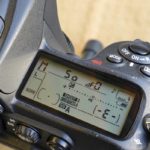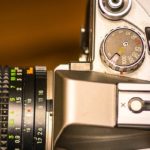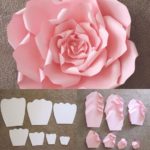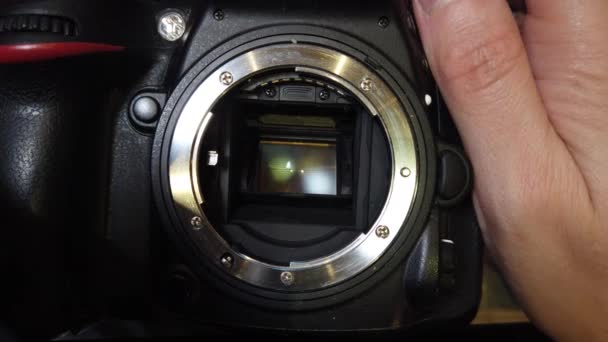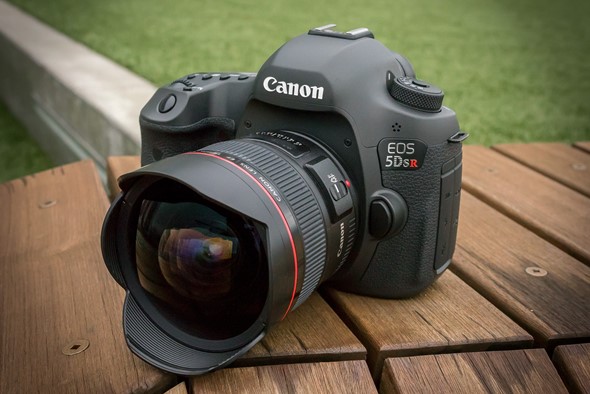What is aperture in a camera
Aperture is one of the camera elements that directly affects brightness and contrast. Therefore, if you want to shoot high-quality and deep images, you need to understand its features. It varies in the creation of effects and size.
The content of the article
What is aperture in a camera?
To understand what kind of element this is, you need to imagine the ordinary pupil of an eye. The more it expands, the more light penetrates the retina. The same goes for the diaphragm. Its diameter allows you to adjust the amount of light reaching the matrix.
Externally, the element resembles several petals located inside the lens. When expanding or contracting, the amount of penetrating light is formed. The number of petals determines how the areas of the image in the out-of-focus zone will look. Aperture also affects the following characteristics:
- Depth of field.
- Brightness of the photo.
- Overall frame quality, including sharpness and various visual effects.
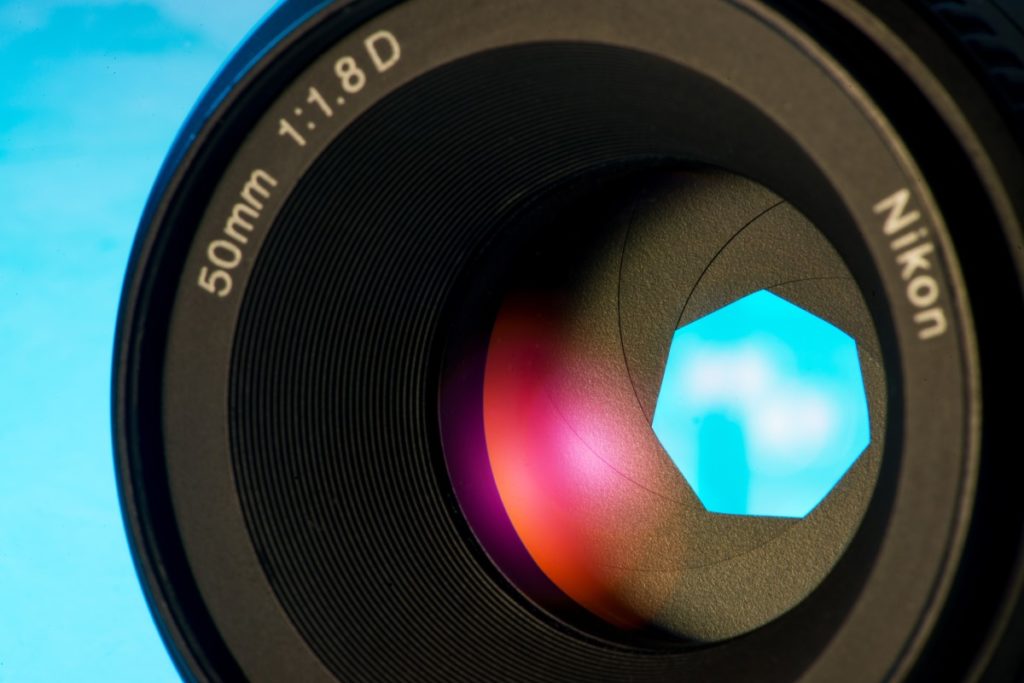
Design and principle of operation
This element works quite simply. It has already been compared to the pupil of the eye. The diaphragm consists of special blades. It is with the help of them that it is possible to regulate the amount of incoming light. They either narrow or expand.
The correct setting of this element determines how high-quality the pictures will be. The photographer can produce it himself.
There are several types of aperture that affect the final shot. Among them:
- Revolver. The element externally resembles a disk with holes of different diameters. A similar type is found in simple models.
- Plug-in. The plate-shaped part also has holes with different diameters. They are inserted into a slot located in the lens frame between the lenses.
- Iris. A common type found in most modern devices. The hole size can be adjusted quickly. One of the advantages is the compactness of the type.
If you arrange the element so that it is minimally open, you will get bright and clear shots. If you want to add a little darkness or dim lighting to the image, then set the petals to maximum opening.
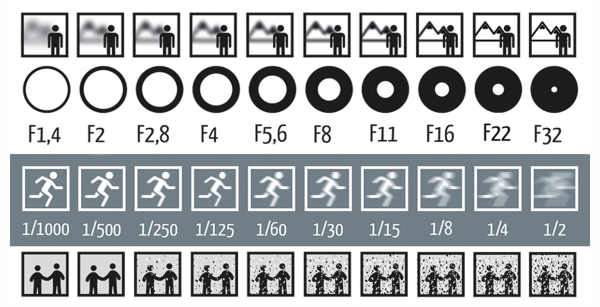
Aperture effects
It was noted that in addition to colorful photographs, such an element can give the frames some special effects. One of these is exposition. In other words, this is the degree of brightness of the picture. Naturally, when adjusting the amount of penetrating light, this parameter also decreases or increases. The wider the aperture is open, the brighter and more saturated the pictures will be.
In low light conditions, including night photography, the petals open to their maximum. Otherwise, the picture will come out even darker. Human eyes have a similar effect. In the dark, the pupils dilate to see better.
The following effects include depth of field. Professionals call this the term depth of field. Abbreviation based on the first letters of the full name.DOF is a parameter of the area of the picture that appears sharp from the foreground to the background. Accordingly, if the background in the frame is out of focus, this indicates a low depth of field. When you can clearly see all objects on different planes of the image, it means that the depth of field is maximum.
The more the petals are open, the more the background is blurred. Photographers usually use a similar effect in portrait photography. They open the petals partially or completely so that only the model or object remains in focus. This allows the background to not distract attention from the main subject in the photo.
If you plan to photograph landscapes or architecture, then the aperture is completely or partially closed. Then every detail will be visible in the picture.
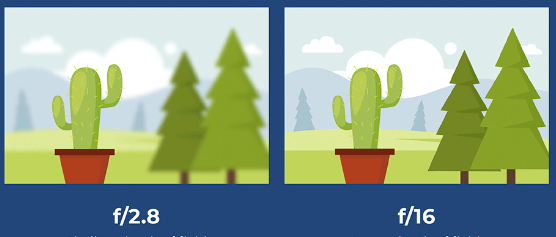
Aperture sizes
This option appears as the letter f followed by a number. This is what indicates the size of the aperture. Its change shows how open or closed the petals are. Many beginners get confused when trying to figure out the size of this element.
It is common to think that the more the petals open, the more the f-number increases. But this is absolutely not true.
The lower the number, the more light enters the matrix. That is, a decrease in the number indicates an expansion of the diaphragm. Accordingly, an increase in the number indicates the closing of the petals. This means f/1.4 is much larger than f/8. This can be difficult for a beginner to remember.
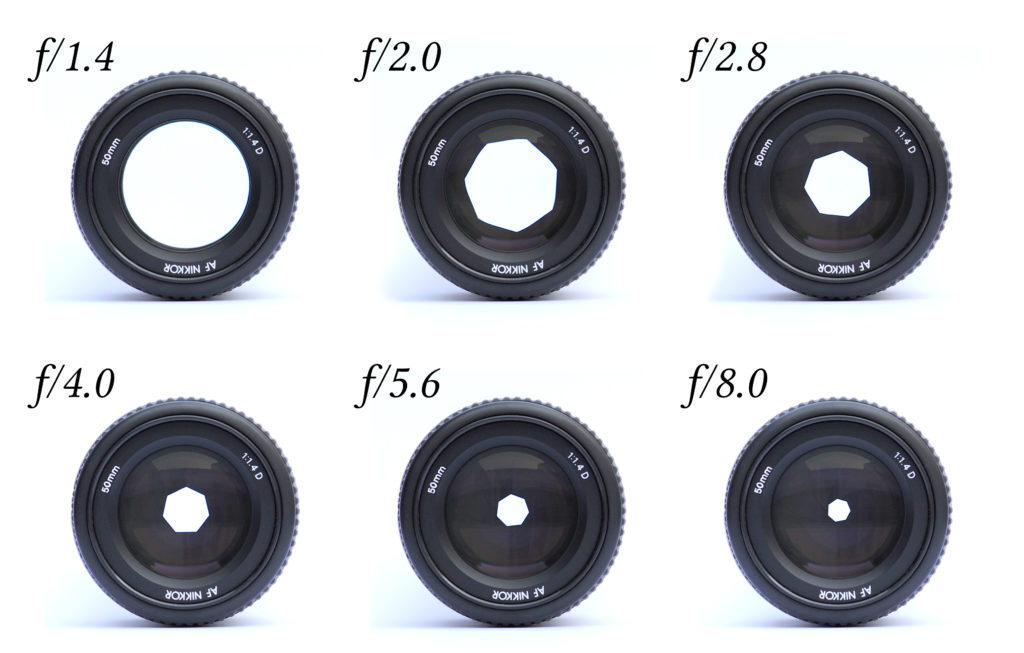
To better understand such inconsistencies, it is worth noting that the aperture size value is indicated in fractions. Therefore, f/8 translates to 1/8. It is much easier to get used to such a system if you remember and imagine everything in the form of shares. Then it becomes clear that 1/8 is much less than ¼.
How to choose the right aperture value
To get beautiful pictures, you need to learn how to set up and work with different elements and functions of the camera. A beginner should practice with shots and carefully study all the capabilities of the lens.
For landscapes, wide-open petals are suitable - to the maximum. When you plan to shoot a portrait, you should reduce the size of the element by 2/3. This will allow you to get a blurred background and focus attention on the main object in the frame.
It is worth opening the aperture wide in conditions when the shooting area is quite dark. If the lighting is good, you can slightly cover the petals. There will be enough light in the frame.
Each camera has a maximum petal opening size. If it is f/1.4 or f/1.8, then the lens is pretty good. Typically, such devices are more expensive. You can ignore the minimum value. Most modern cameras can go down to f/16. A photographer is unlikely to need a lower value in everyday shooting.
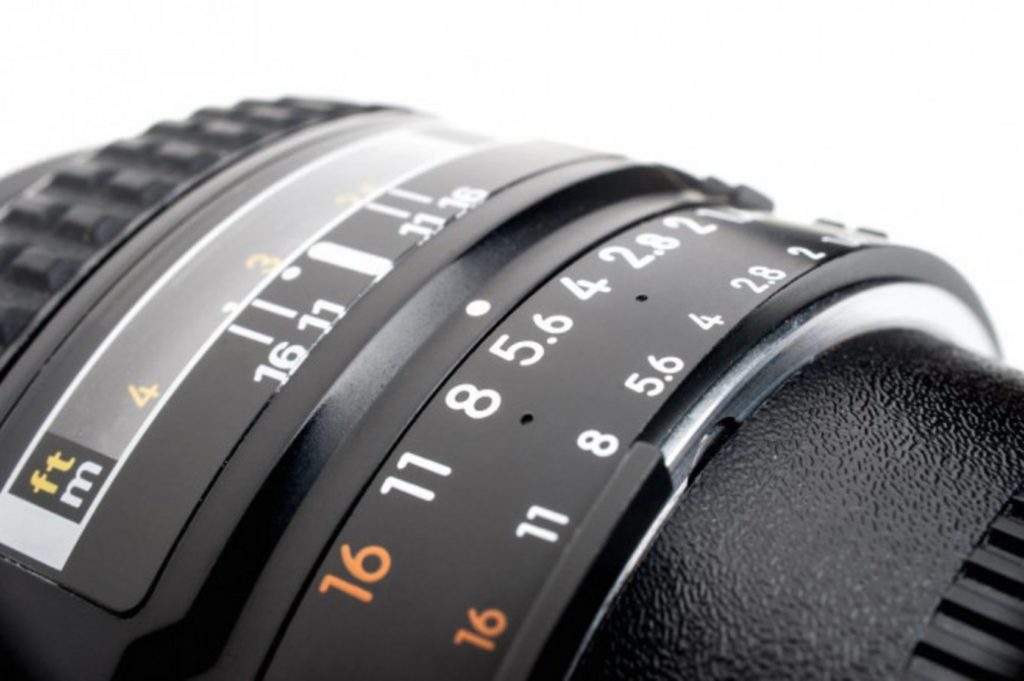
It is worth noting that if a special zoom lens is used, it can change the maximum set aperture value. Only expensive zoom equipment allows you to maintain the set size of the lens petals in constant mode.
Understanding how to work with the amount of light coming in takes practice. To do this, different shooting objects, lighting conditions, etc. are selected.
Aperture is one of the most important parameters in a camera. It directly determines how the frame will turn out. It affects the brightness and blur of the background.The correctly configured and selected position of the petals, which are responsible for the expansion and contraction of the lens, affects the depth of field and how the photo will ultimately turn out.
Using this element, you can achieve other effects on the image. It is advisable to experiment to achieve amazing results and learn to feel the size of the petals and be able to compare them with the shooting conditions. Constant practice will help a novice photographer with this. The main thing is not to be afraid to change your settings and try something new.

